Resistance/Resistor Color Coding: How to Calculate & How to Remember
hive-148441·@mobi72·
0.000 HBDResistance/Resistor Color Coding: How to Calculate & How to Remember
One of the first things we learnt during the initial days of first year first semester's labs was "Resistances'/Resistors' Color Coding" <center></center> <center><sup>[Source](https://www.shutterstock.com/image-photo/resistors-massive-coal-type-seen-various-751362757?irgwc=1&utm_medium=Affiliate&utm_campaign=Pixabay+GmbH&utm_source=44814&utm_term=https%3A%2F%2Fpixabay.com%2Fimages%2Fsearch%2Fresistance%2520color%2520coding%2F)</sup></center> It is 99.99% true that no electronic circuit is completed without a resistor. Resistor is an electronics component which decrease the amount of current passing through it and as a result it develops a voltage (voltage drop) in between both of its terminal. Seeing it in a broader view, resistor/s create a certain voltage between two points on an electric circuit in combination with other electronic components. Even though, you can measure the value of a resistor with a Ohm meter or multi-meter, it is better to memorize its color coding for being more productive and if you're a student of Electronics, then it's a must. The value of a resistor is used to represent on its body with bands of different colors. <center>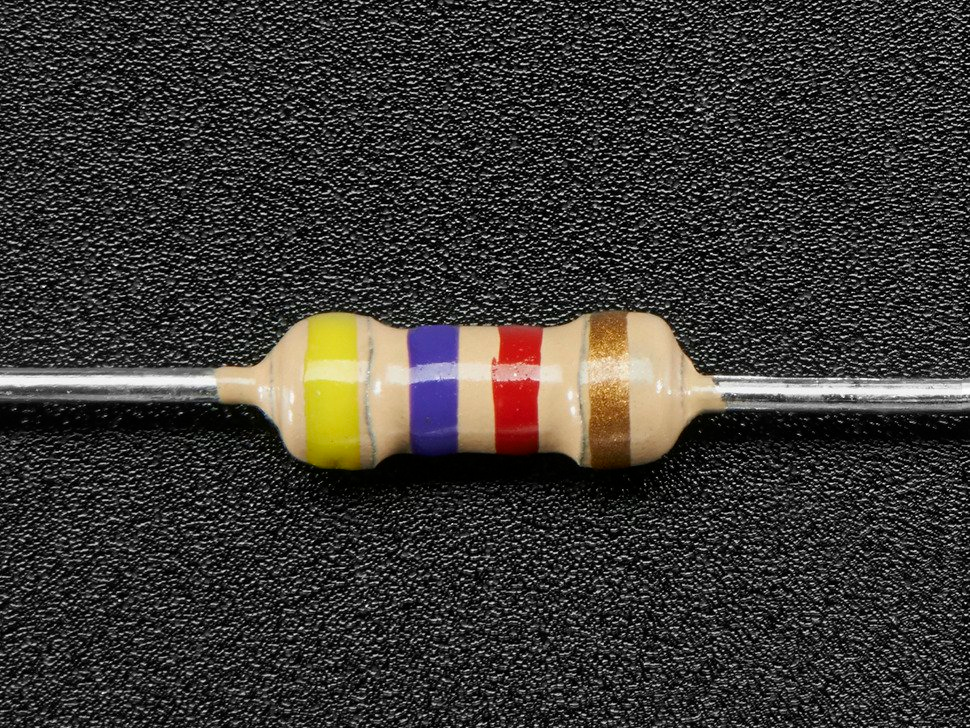</center> <center><sup>[Source](https://www.adafruit.com/product/2783)</sup></center> The resistor in the above picture is a 4-band resistor *(Other type of resistors are 5-band resistors)*, and has a value of 4.7 KΩ (4.7 Kilo Ohm). Let's see how it can be calculated and what are the values associated with different colors. <center>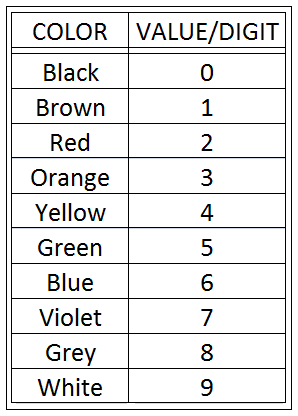</center> Remember, in a 4-band resistor, you'll find three colors closer to each other than the fourth one. To read or calculate the value of a resistor it must be held in the hand or placed on a surface in such a position that the side of those three color bands must be on the left hand side *(just like in the second image of this post)*. <center></center> The value, 4.7 KΩ, of the resistor in the image is calculated with the color bands starting from the left. - First color-band determines the value for the first digit *(4 in this example)*. - Second color-band determines the value for the second digit *(7 in this example)*. - From the Third color-band we get the value of "n" in "10<sup>n</sup>" or the power of 10 which is then termed and functioned as a "multiplier" *(n = 2 in this example. So, multiplier = 10 <sup>2</sup> = 100)*. <center>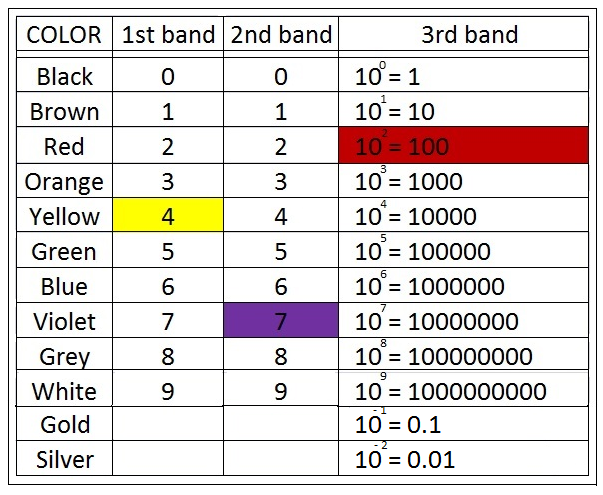</center> By multiplying 47 with 100, we get the value 4700Ω or 4.7KΩ. <center></center> During our studies, we used the following mnemonic to memorize resistor color coding. #### <center>Better Be Right Or Your Great Big Virtue Goes Wrong</center> <center>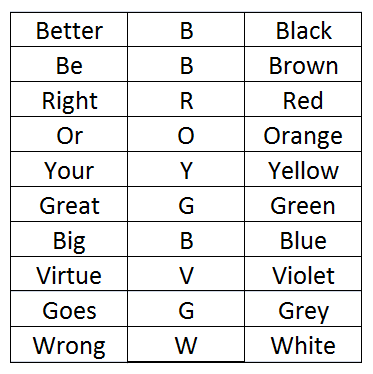</center> This is a popular mnemonic among global electronics community and you can find it online, with one exception though, online version includes "Venture" instead of "Virtue". Thanks to it, I still remember resistor color coding. <center></center> Another factor which should be considered when calculating the value of a resistor is its TOLERANCE. *Tolerance of a Resistor is the measurement of the percentage of error in its value. Tolerance could be in the range from 0.1% to 20% plus/minus.* Meaning... Accurate value of a 100Ω resistor with 20% plus tolerance is 120Ω (100 + 20), and with 20% minus tolerance, it will be 80Ω (100 - 20). *It is of utmost importance to count tolerance in the total value of the resistor because when designing/making an electronics circuit, a minor change in the value can change the overall output and can cause failure to get the intended result.* <center></center> Tolerance of a resistor has its own color coding as well. <center>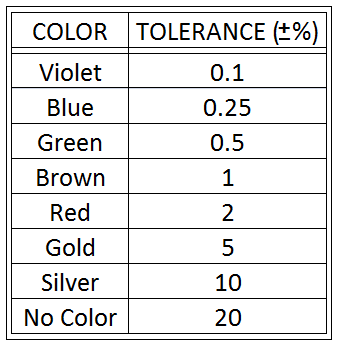</center> I don't know any phrase or mnemonic to remember the Tolerance Color Coding, do share in the comments if you are aware of any.
👍 rpi, eforucom, steemincome, qurator, tinyhousecryptos, poodlenoodle, minibets, gregory-f, techken, sdibot, qustodian, leonnolan24, espoem, che-shyr, ogsenti, certain, minib1, laissez-faire, voter001, map10k, earnwic, si1, majes.tytyty, chintya, rizqyeka, puliq, appicsgirl, mary.janikowski, alinabarbu, naha.stem, anonymousman1, s77assistant, build-it.curator, dadidu, diverse, steem-plus, postyj, rezoanulv.build, adelepazani,